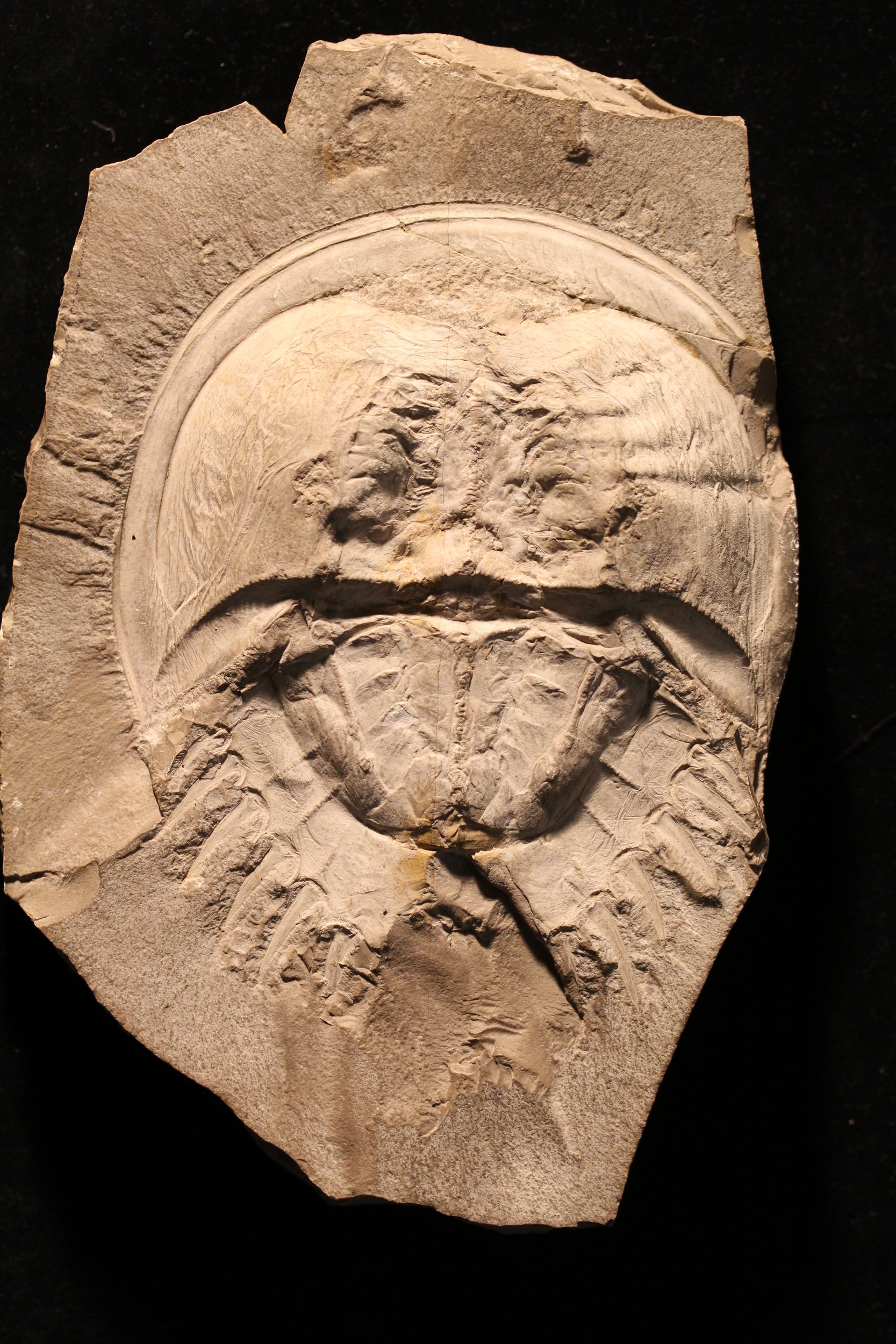Research Overview
My research interests centre around exploring patterns in macroevolution and macroecology through a phylogenetic framework. My work specifically focuses on Palaeozoic arthropods, with a particular focus on aquatic chelicerates (eurypterids, xiphosurans, and chasmataspidids). I have a specific interest in applying phylogenetic methodologies to fossil groups, both in regard to resolving issues of arthropod systematics and to tackling broader macroevolutionary questions, especially surrounding mass extinction events. My work combines phylogenetic and paleoecological analyses to quantify patterns of morphological change in response to shifts in ecology, and compares changes in evolutionary rates and ecological preferences to search for selective patterns across extinction events and subsequent recoveries. With these data I am able to explore how evolution operates and the ways in which different evolutionary lineages respond to distinct extinction forcing mechanisms.
Aside from my work on eurypterids and macroevolutionary research, other research interests include: the importance of lagerstätten for informing on arthropod evolution; studying evidence for arthropod development in the fossil record and the role of heterochrony in arthropod evolution, including the importance of ontogenetic data for phylogenetic analyses and calculations of morphospace; the relationship between diversity, morphological disparity, and ecological variety; and the generality of ecological preferences across and within clades.
I am always interested in pursuing new collaborations. If you want to talk to me about a new avenue of research or have fossil material, feel free to contact me.
Arthropod paleobiology
Bringing extinct organisms to life through specimen study, high detail imaging, and comparative zoology, with a focus on functional morphology and ecology.
Heterochrony
Examining the ontogeny of living and extinct organisms with a phylogenetic framework to determine the developmental drivers of evolution.
Phylogenetic pALEOECOLOGY
Studying the patterns and processes that drive evolution through combining paleoecological data and phylogenetic hypotheses.
Macroevolution
Analyzing causal factors and the impact of mass extinctions in shaping species diversity, disparity, and geographic distribution across deep time.
Hierarchy Theory
Exploring the competing roles of evolutionary history and ecology in shaping the response of species to environmental changes.
Phylogenetics
Placing fossils on the tree of life through phylogenetic analysis, combining high resolution morphological data with parsimony and Bayesian methods.






